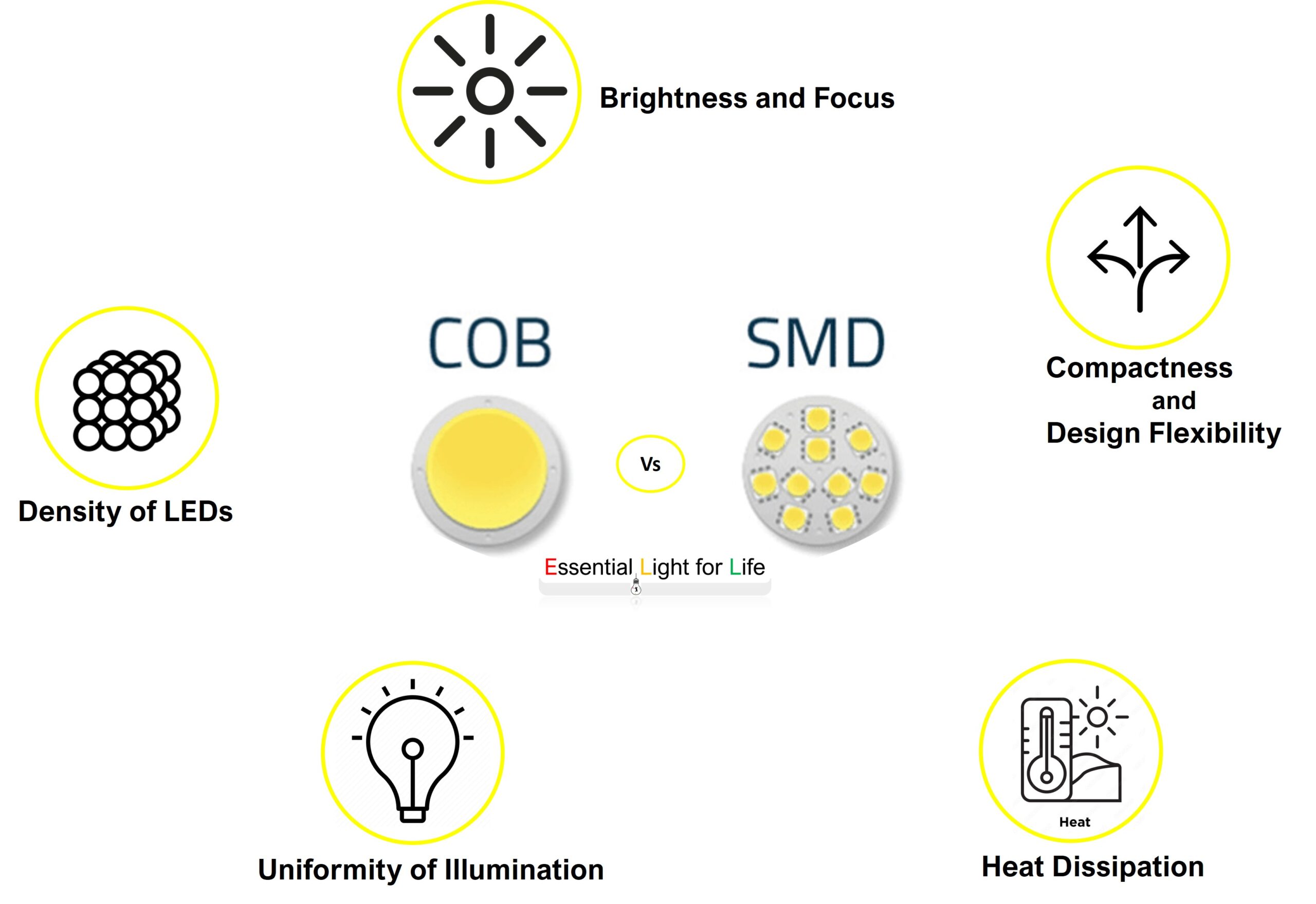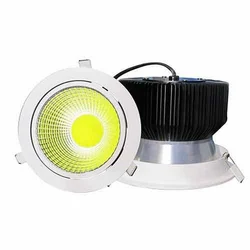When it comes to illuminating your space, there are a plethora of options available in the market. Among these, Chip on Board (COB) LED lighting has gained popularity due to its efficiency and versatility. However, selecting the right COB LED lighting for your specific needs can be a daunting task with the array of options available. To make an informed decision, you need to consider various factors, including wattage, color temperature, and beam angle options. In this article, we’ll guide you through the process of choosing the perfect COB LED lighting solution.
Understanding COB LED Technology
Before delving into the factors to consider when choosing COB LED lighting, it’s essential to have a basic understanding of what COB LEDs are and how they work. COB stands for “Chip on Board,” which refers to the packaging technology where multiple LED chips are mounted directly onto a single substrate or circuit board. This arrangement enables COB LEDs to provide a high lumen output and excellent thermal management, making them ideal for various lighting applications.
Factors to Consider When Selecting COB Lighting
1. Wattage:
One of the primary factors to consider when choosing COB LED lighting is the wattage. Wattage determines the brightness or lumen output of the light. The higher the wattage, the brighter the light. However, it’s crucial to match the wattage to the specific lighting task and the size of the area you want to illuminate. For example, a higher wattage COB LED might be suitable for outdoor floodlighting, while a lower wattage one is ideal for accent or task lighting indoors.
2. Color Temperature:
Color temperature, measured in Kelvin (K), determines the color appearance of the light emitted by the COB LED. It’s categorized into three main groups:
- Warm White (2700K-3500K): This range produces a soft, yellowish-white light similar to traditional incandescent bulbs. It’s great for creating a cozy and inviting ambiance, making it suitable for residential spaces like living rooms and bedrooms.
- Neutral White (3500K-4500K): This range offers a more balanced, pure white light. It’s commonly used in workspaces, kitchens, and retail environments, as it provides a clean and focused illumination.
- Cool White (4500K-6500K): Cool white light appears brighter and has a bluish hue. It’s often chosen for tasks that require high visibility, such as reading, detailed work, or outdoor security lighting.
Select the color temperature that aligns with the mood and functionality of the space you’re lighting. You can also mix and match color temperatures for different areas within your home or workspace.
Applications of COB LED Lighting: From Homes to Industries
3. Beam Angle Options:
The beam angle of a COB LED refers to how wide or narrow the light is spread. It’s crucial to choose the right beam angle to ensure optimal coverage. Here are the common beam angle options:
- Narrow Beam (15-30 degrees): Suitable for spotlighting or accentuating specific objects or areas. It provides a focused and intense beam of light
- Medium Beam (40-60 degrees): Ideal for general lighting in spaces like kitchens, living rooms, or offices. It offers a balanced distribution of light.
- Wide Beam (90+ degrees): Offers broad illumination, making it suitable for ambient lighting in larger spaces or for wall washing.
Consider the purpose of your lighting and the layout of the room to determine the most appropriate beam angle.
4. Dimmability:
Many COB LED lighting options come with dimmable features. Dimmable lights provide you with control over the brightness level, allowing you to create different moods and save energy. Check whether the COB LED you’re considering is compatible with your existing dimmer switches or if you need to invest in dimmer switches designed for LEDs.
5. Energy Efficiency:
COB LED lights are known for their energy efficiency, but it’s still worth checking the energy rating and efficiency of the specific model you’re interested in. Look for LEDs with high lumens per watt (lm/W) ratings, as this indicates better energy efficiency and cost savings over time.
6. Quality and Brand Reputation:
Finally, don’t overlook the importance of quality and brand reputation. Reputable brands often invest in better components and design, resulting in more reliable and durable COB LED lighting solutions. Reading reviews and seeking recommendations can help you identify trusted brands and products.
Conclusion
Choosing the right COB LED lighting for your needs involves considering several key factors, including wattage, color temperature, beam angle options, dimmability, energy efficiency, and the reputation of the brand. By carefully evaluating these factors and matching them to your specific lighting requirements, you can illuminate your space efficiently and effectively, enhancing both its functionality and aesthetics. Whether you’re lighting a residential area, a workspace, or a commercial environment, COB LEDs offer versatile and energy-efficient solutions to meet your lighting needs.
How do I choose a COB light?
Consider the purpose: Determine if it’s for general illumination, accent lighting, or specialized applications like growing plants.
- Wattage: Higher wattage provides more light, but also consumes more power.
- Color Temperature: Choose between warm, neutral, and cool whites based on the desired ambiance.
- Beam Angle: Select a narrow beam for focused lighting or a wider beam for broader coverage.
- Dimmability: Decide if you need adjustable brightness.
- Quality and Brand: Opt for reputable brands and check for certifications.
How many watts per meter for COB LED?
The wattage of a COB LED depends on the specific product and its intended use. For example, a common range for COB LED strips is between 7-14 watts per meter. Always refer to the manufacturer’s specifications for accurate information.
How many lumens per watt is a COB LED?
COB LEDs are highly efficient. They can produce around 100-130 lumens per watt, which is higher than many other types of LEDs.
Does COB light consume more electricity?
COB lights can consume more electricity than standard LEDs, especially if they have a higher wattage. However, they are still highly efficient compared to traditional incandescent bulbs.
What is the efficiency of COB LED?
COB LEDs are known for their high efficiency. They can convert a significant portion of electrical energy into light, with an efficiency of around 80-90%. This is much higher than incandescent bulbs which waste a lot of energy as heat.
Remember, when choosing a COB light, it’s crucial to consider your specific needs and the intended application to ensure you get the most suitable product for your requirements. Always refer to the manufacturer’s specifications for precise details.




